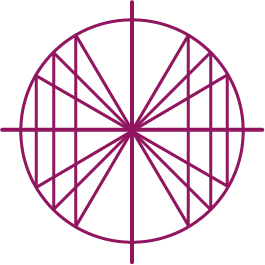Discrete Mathematics Online Course for Academic Credit
| Course Title: | Computational Discrete Mathematics |
| Catalog Number: | DMAT 225 |
| Credits: | 4 Semester Credit Hours |
| Syllabus PDF: | PDF Syllabus for Computational Discrete Mathematics |
| Delivery: | Fully Online, Asynchronous, Self-Paced |
| Click Here to Enroll in DMAT 225 - Computational Discrete Mathematics | |
Roger Williams University Course Catalog Listing: DMAT 225 - Computational Discrete Mathematics
Course: DMAT 225
Course Title: Computational Discrete Mathematics
Transcript Course Title (30 Characters Max:): Comp Discrete Math
Course Description: A single course on discrete mathematics with emphasis on the connections to computer science. Topics include sets, functions, mathematical induction, sequences, recurrence relations, logic, proofs, and introductions to combinatorics and number theory. [4 Semester Credits]
Prerequisite: Successful completion (C- or higher) of Precalculus with Trigonometry or equivalent, or consent of instructor.
E-Textbook: Computational Discrete Mathematics by Skiena/Pemmaraju
Discrete Mathematics and Its Applications by Kenneth Rosen, 7th
Software: Mathematica
PDF Course Syllabus: Detailed Course Syllabus in PDF for DMAT 225 - Computational Discrete Mathematics
DMAT 225 - Computational Discrete Mathematics - Learning Outcomes
- 1. To develop understanding and ability in symbolic logic
- 2. To understand and formulate basic mathematical proofs
- 3. To understand and formulate mathematical conjecture and algorithmic experimentation
- 4. To understand and compute the core concepts of Set Theory
- 5. To develop understanding of introductory Number Theory and Cryptography
- 6. To understand and formulate induction and recursion proofs and computations
- 7. To understand and compute with the Principals of Counting and Recurrence Relations
- 8. To develop understanding of introductory Graph and Tree Theory
DMAT 225 - Computational Discrete Mathematics - Syllabus of Topics
1. Getting Started 1.1. Email and Chat 1.2. Learning About the Course 1.3 Required Hardware 1.4. Software Fundamentals 2. Logical Reasoning 2.1. Propositional Logic 2.2. Equivalences 2.3. Inference 2.4. Introduction to Proofs 2.5. Proof Methods and Strategies 2.6. Conjecture and Experimentation 3. Set Theory 3.1. Sets and Set Operations 3.2. Functions 3.3. Sequences and Summations 3.4. Matrices 4. Algorithms 4.1. Introduction 4.2. Growth of Functions 4.3. Complexity of Algorithms 5. Number Theory 5.1. Modular Arithmetic 5.2. Divisibility 5.3. Primes 5.4. Greatest Common Divisors 5.5. Congruences 5.6. Cryptography 6. Recursion 6.1. Danger in Recursion in Programming 6.2. Induction 6.3. Recursion and Algorithms 7. Counting 7.1. Basics of Counting 7.2. Pigeonhole Principle 7.3. Permutations 7.4. Combinations 7.5. Recurrence Relations 7.6. Divide-and-Conquer Algorithms 8. Relations 8.1. Properties of Relations 8.2. Closure 8.3. Equivalence 9. Graph Theory 9.1. Graphs and Graph Models 9.2. Generating Graphs 9.3. Representing Graphs and Graph Isomorphism 9.4. Connectivity 9.5. Euler and Hamilton Paths 9.6. Graph Coloring 9.7. Trees
Distance Calculus - Student Reviews
There is a steep learning curve early on to get used to the software and the kind of course this is.
Ultimately, I feel like what I learned will allow me to actually use the math and build upon it in the future. If you care about learning, rather than just passing a requirement, this is a great course for you.
One of the best math classes I have ever taken. The lessons made the failures of my previous professors very apparent. In a few short minutes, things that I used to struggle with just clicked. This professor is top notch and really wants you to understand how to use the material.
NEGATIVES:
The SOFTWARE is extremely frustrating. Even after taking the time to learn, there are countless glitches. You learn to work around them, and overall, the software makes the math convenient, but its failures are sorely felt throughout the course. Make sure you save often as it crashes regularly, especially with graphs.
The assignments are easy enough but some of them don't line up with the taught material. Be prepared to do some of your own independent research to get a deeper understanding of why things are the way they are.



